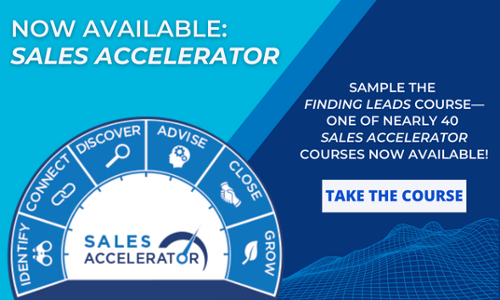
What worked a few years ago and helped gain successful sales leads might be outdated and could never work now. For instance, there were times when cold calling was king, but it's not as effective in this age of digital marketing.
Therefore, adjusting your strategies is incredibly crucial in ensuring you get quality sales leads. Here's a detailed look at some of the strategies you can use.
Understand What Comprises a Bad Lead
Knowing whether a lead is good or bad makes all the difference in helping you focus on the good leads with high conversion rates. Here are some common indicators of bad leads:
- Your target persona doesn't have the financial resources to invest in your service or product
- Your target geographical area doesn't suit your product
- The prospect persona is uninterested in your sales attempts
- Unresponsiveness to phone calls and emails
- The target persona cannot make the purchase decisions
Refine Your Buyer Personas
Now you know what qualifies as a good and bad lead, your next step should be refining your buyer persona. Otherwise, you will use lots of strategies in your lead targeting in no vain. Some of the methods you can use to refine your buyer persona include the following:
- Review and refine your data sources by identifying inconsistencies in the type of data they capture related to your target personas.
- Verify any assumptions you may have about your target personas. Some strategies that can help you include using focus groups, feedback forms, user testing, and A/B testing.
- Segment your target personas depending on the diversity and size of your target market. You can segment your buyer persona into different criteria like behavior, psychographics, and the stages of the buyer's sales journey to create a more personalized marketing campaign.
- Update your buyer profile with the latest information about their name, age, job titles, income, motivations, challenges, buying processes, and more.
Target Your Ideal Customer Profile (ICP)
At this point, you have enough buyer personas to generate quality leads. Your next step should be to target the ideal customer profile.
An ideal customer profile refers to the perfect customer or company you want to target for your business. It includes profiles of buyers who benefit from your services or products and help your business thrive.
However, it's crucial to note that there's a significant difference between an ideal customer profile and a buyer persona. An ideal customer profile represents an imaginary company that could benefit from your service or product, while a buyer persona is a fictitious character representing the people who work in your target companies.
Some of the ways that help target the ideal customer profile include the following:
- Listing down your best customer based on factors like profitability, satisfaction levels, possibility of contract renewal, and how long they've stayed.
- Analyzing your list of ideal customers based on factors like why you think they're your ideal customer, why they've stayed long, and what makes them buy your service or product.
- Listing notable attributes about the target persona, such as their location, growth rate, technology they use, department, and industry.
- Know their challenges and see how your products and services can help solve them.
Improve Your Lead Capture Processes
Now that you know your ideal customer profile, it's time to improve your capture process. There are various ways to achieve this, including:
- Create relevant target content to get ahead of your target persona's concerns and questions about your product or service.
- Develop detailed contact forms to avoid sending unqualified leads to your sales team. A detailed contact form should include the target persona's name, contact information, positions within their company, and what they do.
- Proactively identify and engage crucial decision-makers in your target company.
- Use automation when possible.
- Ask for referrals from existing personas rather than creating a new lead roaster from scratch while you need to capture new leads. You can use incentives like discounts to convince your existing lead to refer your business to other ideal customer profiles.
Nurture Your Leads Strategically
Lead nurturing is a process of building lasting relationships with the target persona and fostering connections at every stage of the buyer's journey. It begins at the marketing phase and ends once the target persona buys your products or services. Some of the strategies you can use to nurture your leads include:
- Email marketing, but not so frequently to avoid becoming annoying
- Running social media posts and ads
- Content marketing to build credibility and answer your customer's concerns
Optimize Your Ad Targeting
As more businesses adopt and invest in digital marketing, the competition for target personas increases. Therefore, you need to be smart with your Ads by learning to optimize them and target more qualified leads. These few strategies can help you optimize your Ad targeting:
- Create a multi-channel ad campaign
- Track your ad campaigns and make necessary adjustments
- Use highly targeted keywords and ad settings
- Coordinate your ads with your buyer's journey
Conclusion
Generating quality sales leads requires continually adjusting your strategies to stay current and effective. Understanding what constitutes a bad lead and refining your buyer personas are critical first steps.
From there, you need to target your ideal customer profiles with improved lead capture processes like detailed contact forms and referral incentives. Strategic nurturing through tactics like email marketing, social media, and content marketing will help foster relationships at each stage of the buyer's journey.
Finally, optimizing your ad targeting across multiple channels with relevant keywords and alignment to the buying process will ensure you reach the right leads efficiently. By implementing these strategies, you can consistently generate a pipeline of high-quality, sales-ready leads to drive sustained business growth.
*Editor's Note: This blog has been updated since its original post date.





